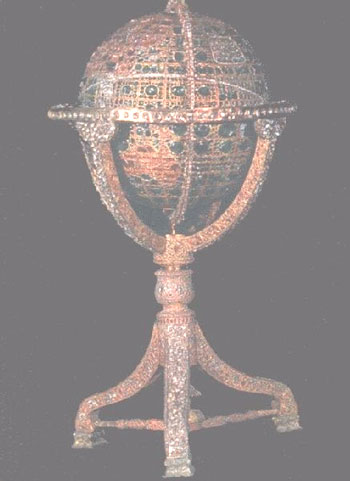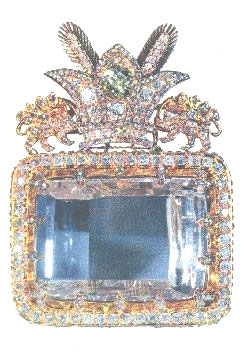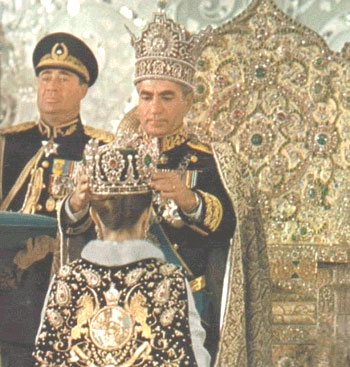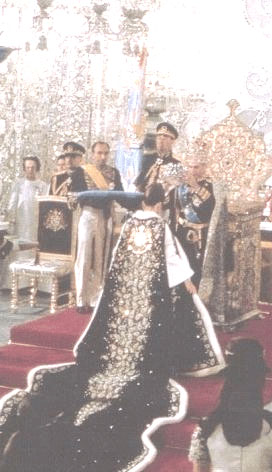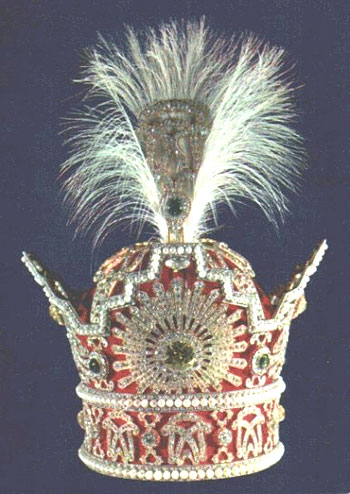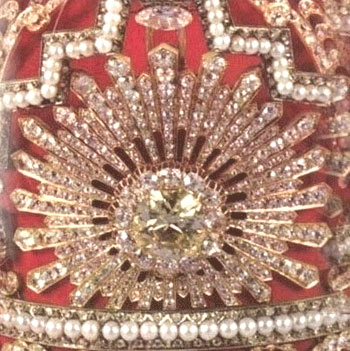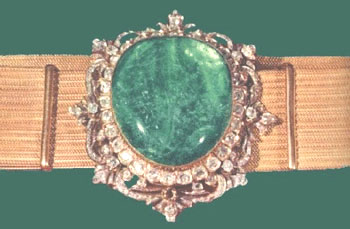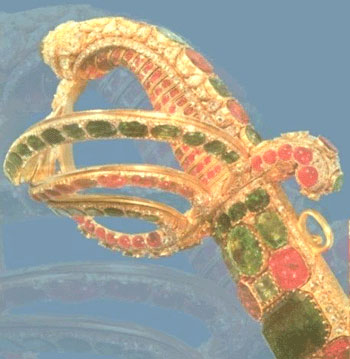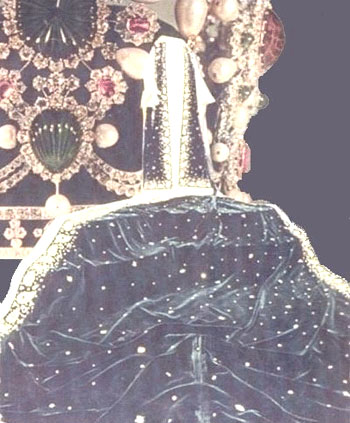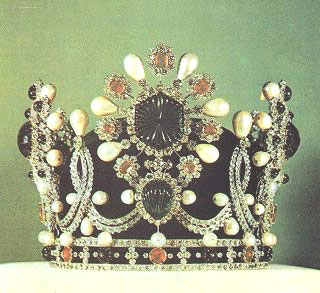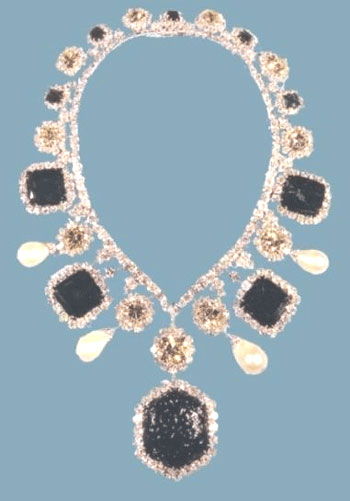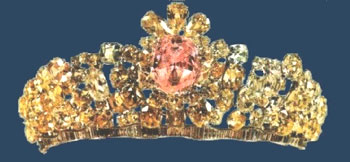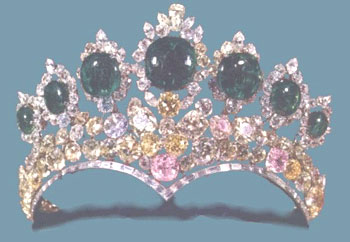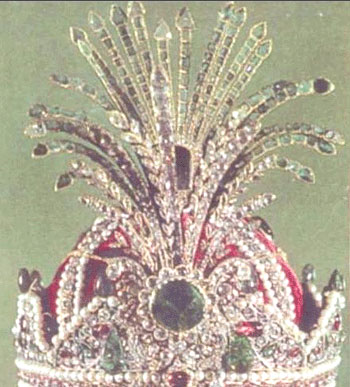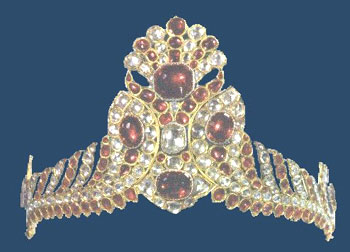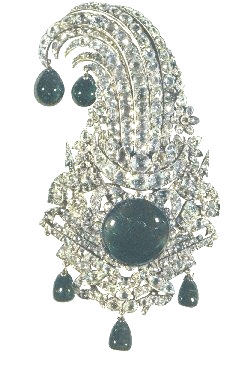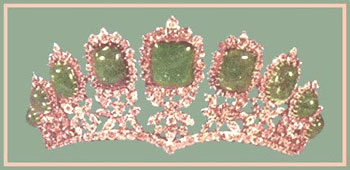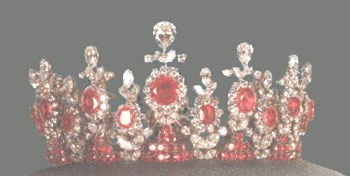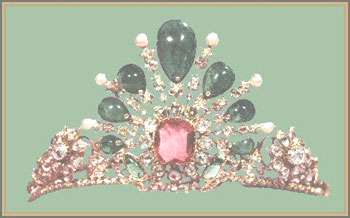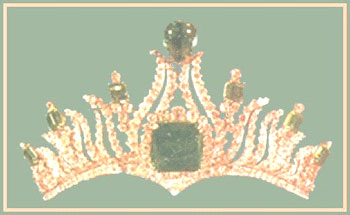|
|
|
The Breathtaking Jewelry Museum of Iran By: Sara Mashayekh www.IranDokht.com Sent by: Darius Kadivar
The National Treasury of Iran located in the Central Bank, on Tehran’s Ferdowsi Avenue, is home to the most exceptional jewels of the country. It is officially named “The Treasury of National Jewels” but is commonly referred to as the “Jewelry Museum.” The museum is only open to the public 3 days a week from 2 to 4 in the afternoon and according to a law made by Reza Shah that is still in force today, the government’s representatives are required to be present while the collection is open to the public. The Crown Jewels of Iran are by far the largest and most dazzling jewel collection in the world. So valuable is the collection that it backs the Iranian national currency as a reserve. It is very difficult to describe one’s feelings
when entering a room full of shining and glittering jewels, especially
if those jewels are closely connected to one’s national identity
and history. The collection, independent of its cultural and historical aspects, is a joy to see. The dim lights of the main room could hardly veil the constant glitter of the beautiful diamonds all over the room. But diamonds are not the only shining objects. There are tons and tons of gold, rubies, emeralds, and pearls. It’s hard to manage to look at very closely, let alone remember, all the objects in the collection and of course it is very difficult to choose one over the others. There are hundreds of small boxes and watches, so many shining tiaras, necklaces, bracelets and pins, each just as beautiful as the next.
But even here among all these shiny objects, it is hard for me to separate myself from the history I know all too well and to simply judge each object for its beauty and worth and not its historical significance. My favorite remains the not-so-shiny robe worn by the greatest minister in the history of Iran. But the robe of Amir Kabir is just as breathtaking as the rest of the collection, even if not for the same reason.
While it is very hard to choose one piece stands out - the world largest uncut diamond of Daryayeh-E-Noor - that rightfully bears the name that describes the entire collection, THE SEA OF LIGHT. This is the sister diamond to the world's largest cut diamond, the "Kooh-e Noor" which is its Persian name and means "The Mountain of Light". Both were taken by Nader from India to Iran. The Kooh-e Noor diamond was looted by Ahmed Beg upon the assassination of Nader Shah of Iran in 1747. Ahmed Beg took the Kooh-e Noor diamond along with other valuable jewels of the Iranian Crown Jewels and left Iran. The gem was later taken to England where the East India Company took possession of it. In 1850 it was presented to Queen Victoria. At present it rests on one of the royal crowns and is kept in the Tower of London. Daryay-E-Noor stayed in Iran to become the diamond of the National Treasury. The Coronation of Pahlavi
Pahlavi Crown - Crown Jewels of Iran
The Imperial Sword of Iran
Jewel-studded Coronation Cape
The upper part of the back of the 15 meters long dark-emerald green velvet coronation cape of the former Iranian empress is studded with a spectacular, colorful and sparkling array of the most precious diamonds, rubies, emeralds and pearls which make up a beatiful pattern of Persian paisley. Spectacular Coronation Crown and Neckless wore by last queen.
Tiara wore by last queen
Taj Kiani
Nader Shah's diamond & rubies hat-tiara
The Nader Aigrette – Iran
Princess Shahnaz Tiara
Princess Ashraf's Tiara
Princess Shams Coronation Tiara
|
